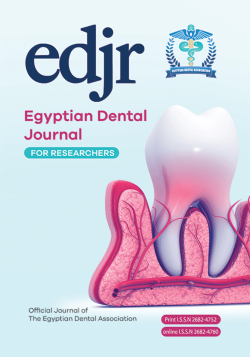Samia Mostafa Kamal, Rehab A. Abdel Moneim And Aml Mostafa Kamal,
ABSTRACT
Background: Human Eruption Is A Unique Developmental Process In The Organism. The Etiology Or The Mechanism Behind Eruption Has Never Been Fully Understood. Accordingly, The Mechanism Of Eruption Depends On The Correlation Between Space In The Eruption Course Created By The Crown Follicle, Eruption Pressure Triggered By Innervation In The Apical Root Membrane And The Ability Of The Periodontal Ligament To Adapt To Eruptive Movements.
Aim: This Study Was Designed To Localize And Delineate The Role Of The Signaling Molecule; Transforming Growth Factor Beta (TGF-?) Before, During And After Eruption.
Materials and Methods: The Study Was Carried Out On Twenty Adult Albino Rats (6-8 Months Old) And Of Average Weight 200-250 Gm. The Rats Were Housed Together For Mating. After Pregnancy Confirmation, The Off- Springs Were: Sacrificed At Birth (Group I), 5 Days Postpartum (Group II), 10 Days Postpartum (Group III) And 15 Days Postpartum (Group IV). Each Group Consisted Of Ten Off-springs. The Lower Jaws Of All Off-springs Were Then Dissected, Processed And Mounted In Paraffin Wax For Histological Examination, Immunohistochemical Assessment And Statistical Analysis.
Results: Immunohistochemical Investigation Showed That TGF-? Was Widely And Deeply Expressed In Tooth Follicle And Bone Trabeculae At The Base Of The Growing Tooth At All Developmental Ages And Was Significantly Increased At 15 Days Postpartum With Statistical Significance; P<0.0001.
Conclusion: Although The Exact Mechanisms Of Eruption Are Not Yet Known, We Proposed A Close Relation Between Signaling Molecules And Eruption Process Based Upon Our Findings And The Apparent Effects Of TGF-? On Odontogenesis And On The Whole Eruption Process.


